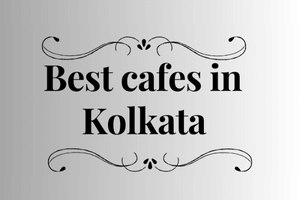
Understanding Kolkata's Rainy Season: A Climatic Overview
The Grand Arrival: Onset of the Southwest Monsoon
The southwest monsoon typically makes its grand entrance into Kolkata around the first week of June and extends until the first week of October. The arrival is often preceded by a period of intense heat and humidity, making the first showers a much-welcomed respite. This period marks a significant shift in the city’s weather, with overcast skies, frequent downpours, and a noticeable drop in temperature. The monsoon season is not just a meteorological event; it’s a sensory experience, characterized by the sound of falling rain, the sight of lush greenery, and the feeling of cool breezes.The Fierce Precursor: Kalbaisakhi or the Nor’westers
Before the official onset of the monsoon, Kolkata experiences a unique weather phenomenon known as the ‘Kalbaisakhi,’ or the Nor’westers. These are severe thunderstorms that occur in the afternoon or evening during the hot pre-monsoon months of April and May. These storms are often violent, bringing strong winds, torrential rain, and sometimes hail. While they can be destructive, they also provide temporary relief from the oppressive summer heat. The Kalbaisakhi is a dramatic prelude to the impending monsoon, a powerful display of nature’s force that is both feared and revered by the people of Kolkata.The Heart of the Monsoon: Peak Rainfall Months
The months of July and August are the heart of the monsoon season in Kolkata, receiving the highest amount of rainfall. During this period, the city can experience prolonged spells of rain, sometimes lasting for several days. The average rainfall in July, the wettest month, is around 354 mm. These intense showers are responsible for the majority of the annual precipitation and play a crucial role in replenishing the region’s water resources. However, this is also the time when the city faces its greatest challenges, with waterlogging and disruptions to daily life becoming common occurrences.A Gentle Farewell: The Retreating Monsoon
By the end of September, the intensity of the monsoon begins to wane, and the season of retreating monsoon commences, lasting through October. This period is characterized by sporadic showers and a gradual clearing of the skies. The temperatures remain pleasant, and the humidity levels start to decrease. This transitional phase from the wet monsoon to the cool, dry winter is a beautiful time in Kolkata. The city, washed clean by the rains, basks in a soft, post-monsoon glow, preparing itself for the festive season ahead.The Science of Showers: How Rain Prediction in Kolkata Works
In a city so profoundly affected by rainfall, accurate weather forecasting is not just a convenience but a necessity. The rain prediction in Kolkata is a complex scientific endeavor, relying on a combination of advanced technology and meteorological expertise. The India Meteorological Department (IMD) is the primary agency responsible for providing weather forecasts and warnings for the city and the surrounding regions.
The Guardians of the Skies: The Role of the IMD
The Regional Meteorological Centre in Alipore, Kolkata, a division of the India Meteorological Department (IMD), is the authoritative voice on weather in the region. It plays a critical role in monitoring weather patterns, issuing forecasts, and disseminating warnings to the public and government agencies. The IMD’s predictions are crucial for disaster management, agriculture, and for the general public to plan their daily activities. While the accuracy of long-range forecasts can be challenging due to India’s complex climate, the IMD has been making significant strides in improving its predictive capabilities with investments in advanced technology.
Decoding the Weather: Tools and Technologies
Modern weather forecasting relies on a sophisticated array of tools and technologies. Meteorologists in Kolkata use data from weather satellites, Doppler radars, and a network of automatic weather stations to monitor the atmosphere. This data is then fed into complex numerical weather prediction models that simulate atmospheric conditions to generate forecasts. These models can predict various parameters like temperature, humidity, wind speed, and, most importantly, the probability and intensity of rainfall. The IMD also issues color-coded alerts (yellow, orange, and red) to indicate the severity of expected weather events, helping the public and authorities to take appropriate precautions.
Life in the Downpour: The Dual Impact of Rain on Kolkata
A City Reborn: The Blessings of the Monsoon
The most immediate and welcome effect of the monsoon is the relief it provides from the scorching summer heat. The city undergoes a stunning transformation, with the dust-laden streets washed clean and the parks and green spaces, like the iconic Maidan, turning a vibrant shade of green. The rains are also vital for the agriculture-dependent economy of West Bengal, ensuring a good harvest. For the residents, the monsoon is a time for introspection, for enjoying the simple pleasures of life, like sipping a hot cup of tea while watching the rain from a balcony.The Urban Challenge: Waterlogging and Its Consequences
Despite the romance associated with the monsoon, the reality for many Kolkatans is the perennial problem of waterlogging. Heavy rainfall often overwhelms the city’s old drainage system, leading to widespread flooding in low-lying areas. This can bring the city to a standstill, causing massive traffic jams and disrupting public transport services. The waterlogging also poses serious health risks, as it can lead to the spread of water-borne diseases. The Kolkata Municipal Corporation (KMC) employs dewatering pumps and undertakes pre-monsoon cleaning of drains to mitigate the problem, but the challenge remains significant.Embracing the Monsoon: A Guide to Enjoying Rainy Days in Kolkata
A Gastronomic Affair: The Flavors of the Monsoon
The arrival of the rains in Kolkata heralds a culinary celebration. The monsoon is synonymous with certain food cravings, and the city’s street food scene comes alive with an array of delicious offerings. A plate of hot ‘khichuri’ (a comforting dish of rice and lentils) accompanied by ‘ilish maach bhaja’ (fried Hilsa fish) is a quintessential monsoon meal in every Bengali household. Street stalls do a roaring trade in ‘telebhaja’ (deep-fried fritters), with popular varieties including ‘beguni’ (eggplant fritters) and ‘aloo’r chop’ (potato fritters). And, of course, no rainy day is complete without a ‘bhaar’ (earthen cup) of steaming ‘chai’ (tea).Rain-Washed Beauty: Sightseeing in the Monsoon
While heavy rain can sometimes play spoilsport, many of Kolkata’s iconic landmarks take on a special beauty during the monsoon. The pristine white marble of the Victoria Memorial, set against a backdrop of dark monsoon clouds and lush green gardens, is a sight to behold. A leisurely walk along the rain-swept Princep Ghat, with its stunning views of the Vidyasagar Setu, is another popular monsoon activity. For a truly unique experience, a ride on one of Kolkata’s heritage trams through the rain-drenched streets offers a nostalgic journey back in time.Cozy Escapes: Indoor Activities for a Rainy Day
When the rain is relentless, Kolkata offers plenty of cozy indoor escapes. The city is dotted with charming cafes and bookstores where you can spend hours with a good book and a warm beverage. College Street, the world’s largest second-hand book market, is a treasure trove for book lovers, and its numerous coffee houses have been the hub of intellectual conversations for generations. The Indian Museum, the oldest and largest museum in India, is another excellent option for a rainy day, offering a fascinating glimpse into the country’s rich history and cultural heritage.Beyond the City: Monsoon Getaways from Kolkata
Coastal Charms: Digha and Mandarmani
The coastal towns of Digha and Mandarmani are popular weekend getaways from Kolkata, especially during the monsoon. While swimming in the sea might not be advisable due to the rough conditions, the dramatic monsoon skies and the roaring waves create a mesmerizing spectacle. The long, driveable beach at Mandarmani is a unique attraction, and the numerous seaside resorts offer a comfortable stay with beautiful views of the rain-swept sea.Hillside Retreats: Darjeeling and Kalimpong
For a longer getaway, the hill stations of Darjeeling and Kalimpong in North Bengal are idyllic monsoon destinations. The rain washes the hills clean, revealing breathtaking views of the lush green tea gardens and the mist-covered mountains. The toy train ride in Darjeeling is a magical experience in the monsoon, as the train chugs through a landscape of clouds and verdant forests. The IMD often issues alerts for heavy rainfall in these regions, so it’s advisable to check the weather forecast before planning a trip.Cultural Sojourn: Shantiniketan
Shantiniketan, the abode of Nobel laureate Rabindranath Tagore, is a place of serene beauty and cultural richness. During the monsoon, the red earth of the region contrasts beautifully with the lush greenery, creating a picturesque landscape. The Visva-Bharati University campus, with its unique architecture and tranquil atmosphere, is a delight to explore in the rain. Shantiniketan is a perfect destination for those seeking a peaceful and culturally enriching monsoon escape.Staying Safe and Healthy: Monsoon Preparedness
Health is Wealth: Preventing Monsoon Ailments
The monsoon is the breeding season for mosquitoes, which can transmit diseases like dengue and malaria. It’s important to take precautions to prevent mosquito bites, such as using repellents and wearing full-sleeved clothing. Water-borne diseases like cholera and typhoid are also common during this season, so it’s crucial to drink boiled or purified water and avoid street food that may be contaminated. Maintaining good personal hygiene, such as washing hands frequently, can also help in preventing infections.Navigating the City: Tips for a Smooth Commute
Commuting in Kolkata during the monsoon can be challenging. It’s advisable to check the latest weather updates and plan your travel accordingly. The Kolkata Metro is often the most reliable mode of transport during heavy rains, as it is not affected by waterlogging. If you are traveling by road, be prepared for delays and choose your route wisely to avoid waterlogged areas. It’s also a good idea to carry a sturdy umbrella, a waterproof bag for your belongings, and to wear appropriate footwear to navigate the wet and slippery streets.Frequently Asked Questions (FAQ) about Rain in Kolkata
When does the monsoon typically start and end in Kolkata?
The southwest monsoon usually arrives in Kolkata around the first week of June and lasts until the first week of October. However, the exact dates can vary each year.Which month receives the most rain in Kolkata?
July is the wettest month in Kolkata, with an average rainfall of about 354 mm.What is Kalbaisakhi?
Kalbaisakhi, or Nor’westers, are severe thunderstorms that occur in the pre-monsoon months of April and May, bringing strong winds and heavy rain.Is it a good time to visit Kolkata during the monsoon?
Visiting Kolkata during the monsoon can be a unique experience. The city is lush and green, and there are many monsoon-specific activities to enjoy. However, be prepared for heavy rain and potential disruptions due to waterlogging.What are the common health risks during the monsoon in Kolkata?
The common health risks during the monsoon include water-borne diseases like cholera and typhoid, and vector-borne diseases like dengue and malaria. It’s important to take necessary precautions to stay healthy.How can I stay updated on the rain prediction in Kolkata?
You can get the latest weather updates and rain predictions from the website of the India Meteorological Department (IMD) and various reliable weather forecasting apps and websites.
Binu Lamba
Binu Lamba is a 29-year-old editor and fact-checker with 7 years of experience in travel content. He verifies all location details, hotel recommendations, and travel tips to ensure our guides are accurate, updated, and helpful for readers planning real trips.

AI Assistant
Our AI writing assistant supports the creation of travel content under strict human supervision. All AI-generated posts are thoroughly reviewed, fact-checked, and updated by our team to maintain trust and accuracy in our travel recommendations.

“Cafe in Kolkata – 5 Best Spots You Shouldn’t Miss”
Kolkata, the City of Joy, is not just about its rich history and vibrant culture; it is also a city that loves its “adda” or

Hotels in Kolkata: Your Ultimate Guide to the City of Joy’s Best Stays
When planning a trip to Kolkata, choosing the right hotels in Kolkata can make all the difference. Whether you’re looking for a luxurious stay or

Tourist Places in Kolkata: Top Attractions to Explore
Kolkata, also known as the City of Joy, is rich in culture, history, and architecture. If you are planning a trip, this guide highlights some








